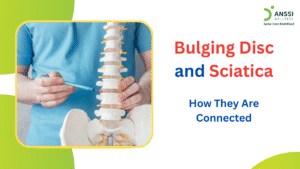Spinal stenosis is a common condition in which the spinal canal narrows, putting pressure on the nerves that travel through your spine. This can lead to persistent lower back pain, numbness or tingling in the legs, and even difficulty walking.
For many people, the idea of spine surgery can be intimidating, as it is often associated with long recovery periods, high costs, and uncertainty about the results. Fortunately, there are several non-surgical treatment options that can offer relief and help manage the condition naturally and effectively.
Understanding Spinal Stenosis
Spinal stenosis often develops gradually, usually as a part of the ageing process. The most common causes include osteoarthritis, wear-and-tear on the spinal discs, thickening of spinal ligaments, and the formation of bone spurs. The spinal canal may narrow as a result of these changes, squeezing the spinal cord and nerve roots.
Typical symptoms include:
- Persistent or intermittent lower back pain
- Tingling, numbness, or weakness in the legs or buttocks
- Pain that gets worse as you stand for a long time or walk
- Relief when sitting or leaning forward
While symptoms may start mildly, they can progress over time, interfering with your daily activities and overall quality of life.
Why Avoid Surgery?
While surgery might be necessary in certain severe cases, it’s not the only solution—and often not the first one either. Here’s why many people prefer to avoid surgical intervention:
- Recovery Time: Spine surgeries typically require several weeks or even months of recovery. This may involve limited mobility, physical therapy, and time away from work or personal activities.
- Surgical Risks: As with any major surgery, there are risks involved—such as infection, blood clots, anaesthesia complications, or even nerve damage.
- Uncertain Results: Surgery doesn’t always guarantee relief. Some patients may not experience the desired outcome and could face recurring pain or further surgeries.
The good news? Many individuals with spinal stenosis experience significant improvement through non-surgical methods, especially when treatment begins early.
Effective Non-Surgical Treatments
Managing spinal stenosis without surgery is entirely possible and often highly effective, when combined with the right therapies and lifestyle changes. Here are the most recommended non-surgical treatments:
1. Posture Correction and Ergonomics
Poor posture and incorrect body mechanics can worsen spinal compression. Maintaining proper posture while sitting, standing, and working can relieve unnecessary stress on the spine.
Simple ergonomic changes like using a chair with lumbar support, keeping screens at eye level, and avoiding prolonged standing, can significantly reduce discomfort.
2. Physical Therapy
A structured physical therapy program can strengthen the muscles supporting your spine, improve flexibility, and stabilise your core. Therapists often focus on stretching tight areas, strengthening weak muscles, and teaching proper movement patterns that prevent further injury.
3. Anti-inflammatory Diet
Your diet has a direct impact on the levels of inflammation in your body. Incorporating foods rich in omega-3 fatty acids (like walnuts, flaxseeds, and fatty fish), leafy greens, berries, and turmeric can help reduce inflammation and promote healing. At the same time, cutting down on processed foods, sugars, and red meat can minimise flare-ups.
4. Gentle Exercises and Walking
Low-impact activities such as walking, swimming, or gentle yoga help maintain spinal mobility and improve circulation. These exercises can also enhance overall strength and stamina without placing excess pressure on the spine.
5. Non-Surgical Spinal Decompression Treatment
This advanced treatment uses a controlled mechanical decompression process to gently stretch the spine. By creating negative pressure within the discs, it helps relieve nerve compression, promotes rehydration of discs, and supports natural healing. Non-surgical spinal decompression is completely non-invasive, pain-free, and doesn’t involve medicines or injections.
Realistic Expectations and When to Reassess
It’s important to understand that non-surgical treatments take time and consistency. Relief won’t happen overnight, but with regular care and commitment, many people regain control over their symptoms and avoid surgery altogether.
However, if symptoms significantly worsen, or if there’s evidence of nerve damage, such as loss of bowel/bladder control or progressive weakness, surgical intervention might be necessary. In such cases, a specialist will evaluate the best course of action based on your condition and overall health.
About ANSSI:
ANSSI Wellness focuses on improving the quality of life for patients suffering from spinal issues, aiming to provide relief where other conventional treatments have failed. Through advanced non-surgical spinal decompression treatment, ANSSI is committed to helping patients avoid surgery and recover in a safe, effective, and compassionate environment.
Connect with ANSSI Wellness on LinkedIn, Instagram, and Facebook for expert guidance.



